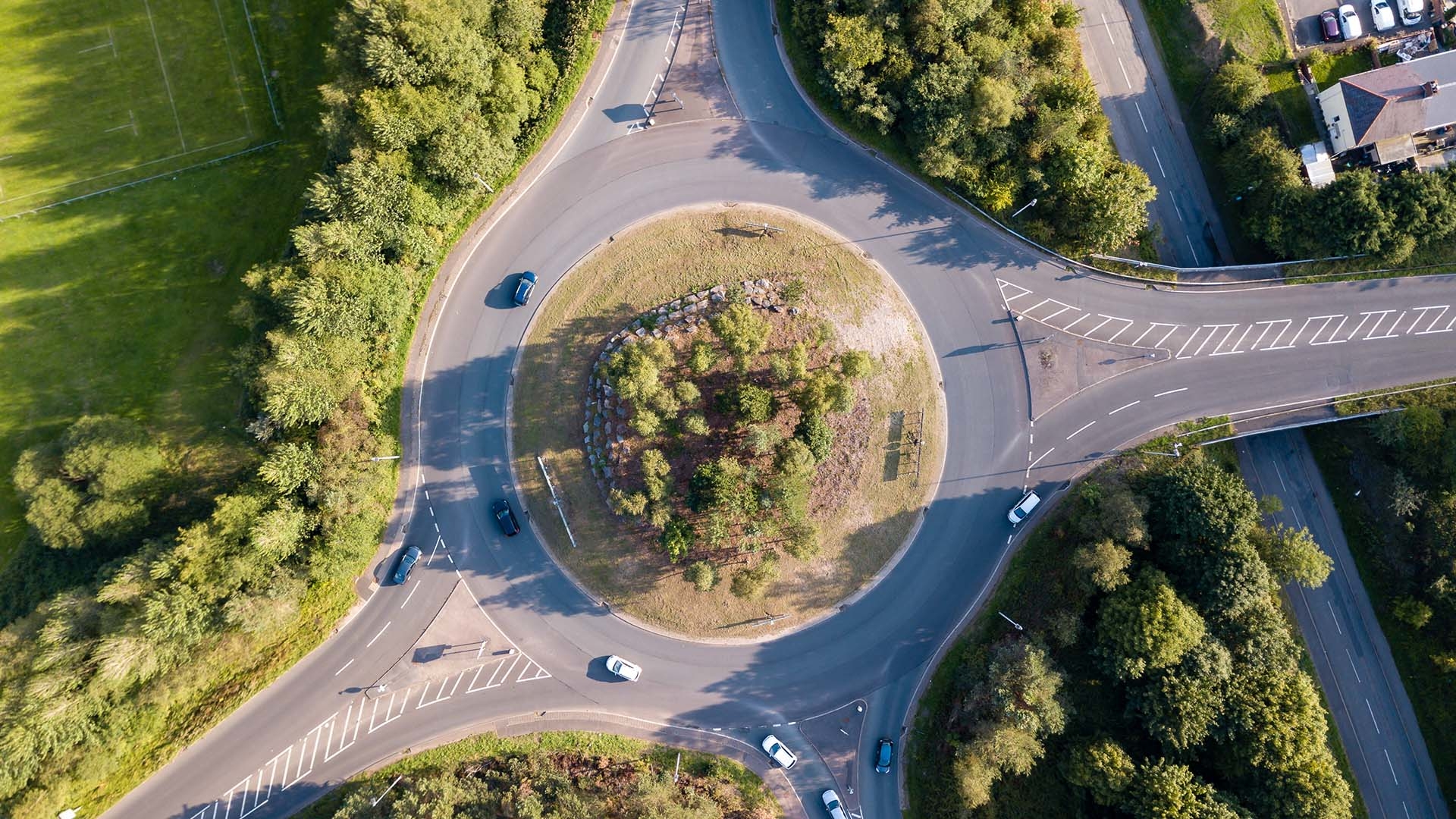
Roundabouts have been a feature of British roads for more than a century, designed to keep traffic moving at busy intersections. Statistics show they are safer than more traditional junctions, such as crossroads.
The modern concept of a mini-roundabout was developed in the early 1970s as a means to improve road capacity and reduce delays at existing junctions. Mini-roundabouts are also used as traffic calming measures, particularly in residential areas.
We all learn how to negotiate a roundabout as part of our driving lessons. Many aspects will be familiar, such as travelling in a clockwise direction, giving way to traffic from the right and using the car’s indicators to signal your intentions.
Choosing the correct lane on an unmarked roundabout is a little trickier, however, and it depends on your intended direction of travel. It also means that you need to move your car into position before you reach the roundabout.
Rule 186 of the Highway Code is clear on certain aspects of using a roundabout, but ambiguous on others. Let’s run through the various options.
Taking the first exit (left)
- Signal left and approach in the left-hand lane.
- Keep to the left on the roundabout and continue signalling left to leave.
Exiting to the right or going full-circle
- Signal right and approach in the right-hand lane.
- Keep to the right on the roundabout until you need to change lanes to exit the roundabout.
- Signal left after you have passed the exit before the one you want.
Taking an intermediate exit
- Select the appropriate lane on approach to the roundabout.
- You should not need to signal on approach.
- Stay in lane until you need to exit the roundabout.
- Signal left after you have passed the exit before the one you want.
In all cases, the advice is valid unless signs or road markings say otherwise. The Highway Code also states: ‘When there are more than three lanes at the entrance to the roundabout, use the most appropriate lane on approach and through it’.
The general rule of thumb is to use the left-hand lane to go straight ahead if the exit is in the ‘12 o’clock’ position. Anything beyond this requires the use of the right-hand lane, unless you are told otherwise. This is the advice given in the book The official DVSA guide to driving: the essential skills.
Use your common sense

As with all driving on the road, some common sense is required. On a roundabout with three exits (not including the entry road), the left-hand lane could be used for the second exit, even if it’s beyond the ‘12 o’clock’ position. There is no right or wrong lane – you should use your own judgement and be aware of other road users.
Use the right-hand lane (or keep to the right of the lane) when taking the third exit. Signal your intentions after you have passed the second exit, moving across to the left while using your mirrors to keep an eye on other road users. Remember, somebody joining the roundabout after you could be in your blind spot on the left-hand side.
A mini-roundabout might feature a single lane, but the same principles of signalling and road positioning still apply. It’s important to use the mini-roundabout in the correct manner; driving over the central island to go straight on isn’t permitted. You must also circumnavigate the roundabout to turn right – not simply cut the corner.
Some roundabouts make it easier. For example, if there are three entry lanes and three exits, you use the left-hand lane to turn left, the middle lane to go straight on and the right-hand lane to turn right.
In some cases, particularly if the exit at ‘12 o’clock’ has two lanes, you could find somebody using the middle or right-hand lane to go straight on. Keep an eye on your mirrors and stick to the left-hand side of the roundabout.
The Alfie’s Driving School website is helpful on this topic. It says: ‘A good rule of thumb is to use the middle lane for anything between the first and last exit – on a five exit roundabout you would stay in the middle lane for exits two, three, and four.’
ALSO READ:
What do the car insurance write-off categories mean?